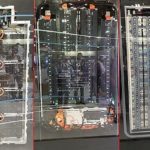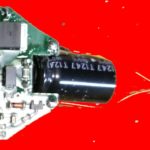Alex Lidow’s latest book provides an update on gallium-nitride technology and applications. Lidow, CEO and co-founder of Efficient Power Conversion (EPC) and the former CEO of International Rectifier, is actually the book’s editor: besides Lidow, there are 27 other contributors. Lidow says there’s a need for this book because of the numerous advances in GaN since his last effort, GaN Transistors for Efficient Power Conversion third edition, which came out in 2019. In that regard, the book provides a novel way to get updates in this fast-changing field: The first page of each chapter contains a QR code which can be used to access an online version of that chapter containing updates since the print book published.

Clearly, this book is for practicing engineers. It assumes the reader knows how a transistor works. If the book had a subtitle, a good candidate might be something along the lines of, The practicalities of applying GaN in power circuits, because that’s what most of the material covers. After reviewing the trajectory of GaN technology, the book digs right into GaN power applications, treating layout considerations, minimizing EMI, and thermal considerations. One chapter covers GaN ruggedness with an emphasis on predicting GaN lifetime from physics-based models, including what happens in the presence of radiation as encountered in outer space.
A good chunk of the book covers GaN uses in three specific applications: dc/dc converters, lidar, and motor drives. There are numerous examples of topologies given in varying power ranges, with a detailed examination of buck converters, bi-directional converters, multilevel converters, and LLC converters employing discrete GaN FETs and GaN ICs. The lidar section covers both short and long-range scenarios. The motor drive section includes a discussion of inverter topologies and GaN in PWM circuits.
The final chapter covers GaN integrated circuit issues and explains where the technology is likely to head in the next few years.
All in all, the 278-page hardcover book is well worth time spent with it for those who want to understand GaN device technology well enough to apply it.







Leave a Reply